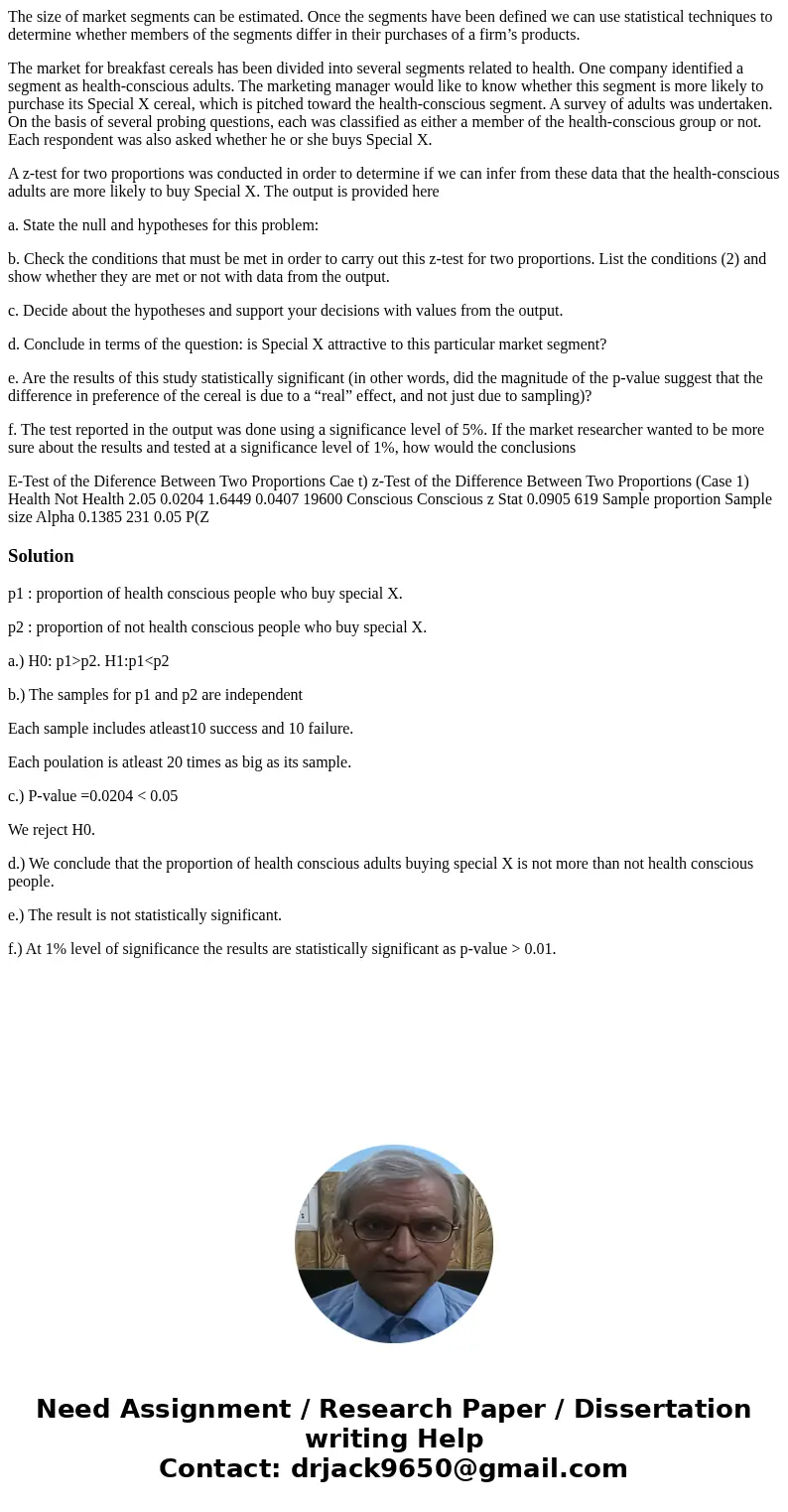The size of market segments can be estimated Once the segmen
The size of market segments can be estimated. Once the segments have been defined we can use statistical techniques to determine whether members of the segments differ in their purchases of a firm’s products.
The market for breakfast cereals has been divided into several segments related to health. One company identified a segment as health-conscious adults. The marketing manager would like to know whether this segment is more likely to purchase its Special X cereal, which is pitched toward the health-conscious segment. A survey of adults was undertaken. On the basis of several probing questions, each was classified as either a member of the health-conscious group or not. Each respondent was also asked whether he or she buys Special X.
A z-test for two proportions was conducted in order to determine if we can infer from these data that the health-conscious adults are more likely to buy Special X. The output is provided here
a. State the null and hypotheses for this problem:
b. Check the conditions that must be met in order to carry out this z-test for two proportions. List the conditions (2) and show whether they are met or not with data from the output.
c. Decide about the hypotheses and support your decisions with values from the output.
d. Conclude in terms of the question: is Special X attractive to this particular market segment?
e. Are the results of this study statistically significant (in other words, did the magnitude of the p-value suggest that the difference in preference of the cereal is due to a “real” effect, and not just due to sampling)?
f. The test reported in the output was done using a significance level of 5%. If the market researcher wanted to be more sure about the results and tested at a significance level of 1%, how would the conclusions
E-Test of the Diference Between Two Proportions Cae t) z-Test of the Difference Between Two Proportions (Case 1) Health Not Health 2.05 0.0204 1.6449 0.0407 19600 Conscious Conscious z Stat 0.0905 619 Sample proportion Sample size Alpha 0.1385 231 0.05 P(ZSolution
p1 : proportion of health conscious people who buy special X.
p2 : proportion of not health conscious people who buy special X.
a.) H0: p1>p2. H1:p1<p2
b.) The samples for p1 and p2 are independent
Each sample includes atleast10 success and 10 failure.
Each poulation is atleast 20 times as big as its sample.
c.) P-value =0.0204 < 0.05
We reject H0.
d.) We conclude that the proportion of health conscious adults buying special X is not more than not health conscious people.
e.) The result is not statistically significant.
f.) At 1% level of significance the results are statistically significant as p-value > 0.01.

 Homework Sourse
Homework Sourse